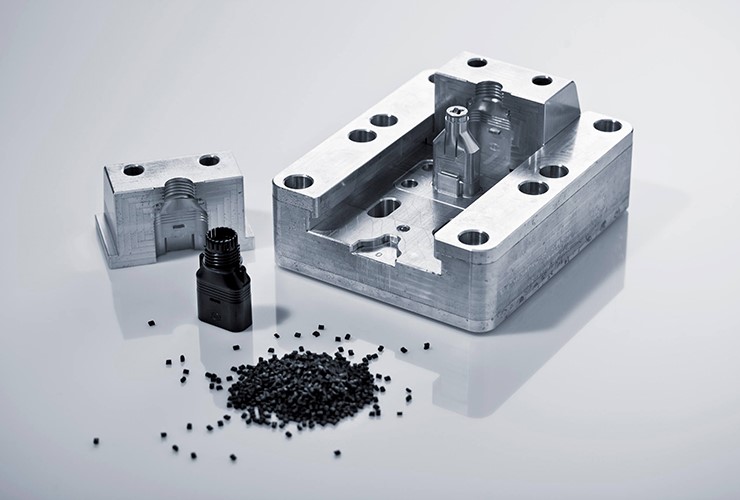Rapid Injection Molding: Revolutionizing Production at Lightning Speed
In today's fast-paced manufacturing landscape, the need for speed and efficiency has never been more critical. Rapid injection molding has emerged as a game-changing solution, allowing companies to produce high-quality parts with remarkable speed. This innovative process not only reduces lead times but also offers greater flexibility in design, making it a go-to option for businesses looking to stay competitive in an ever-evolving market.
By leveraging advanced technologies and materials, rapid injection molding streamlines the production process, enabling manufacturers to quickly respond to changing demands and bring their products to market faster than ever before. As industries continue to seek ways to optimize production and minimize costs, understanding the benefits and applications of rapid injection molding is essential for anyone looking to harness its full potential.
Understanding Rapid Injection Molding
Rapid injection molding is a cutting-edge manufacturing process that accelerates the production of plastic parts. This method is particularly valuable in industries where speed and efficiency are critical. It combines traditional injection molding techniques with advanced technologies to create high-quality prototypes and low-volume production runs in a fraction of the time compared to conventional methods. By utilizing quick-turn tooling and optimized processes, manufacturers can significantly reduce lead times, allowing them to respond faster to market demands.
One of the key advantages of rapid injection molding is its ability to quickly produce functional prototypes. This is essential for companies seeking to test and validate designs before committing to mass production. Rapid injection molding allows for iterative testing, enabling manufacturers to make design adjustments and improvements promptly. The result is a more refined product that meets customer requirements while minimizing costly design flaws.
In addition to speed, rapid injection molding offers versatility in material selection and part complexity. Manufacturers can choose from a wide range of thermoplastics and elastomers, ensuring that the final product meets specific performance criteria. The process can accommodate complex geometries and tight tolerances, making it suitable for various industries, including automotive, medical, and consumer goods. This flexibility empowers businesses to innovate and adapt, fostering a culture of continuous improvement and responsiveness in today's fast-paced market.
Advantages of Rapid Injection Molding
Rapid injection molding offers significant benefits for manufacturers looking to enhance production efficiency. One of the most notable advantages is the drastic reduction in lead time. Traditional injection molding processes can take weeks or even months to set up and deliver final products. In contrast, rapid injection molding employs advanced techniques and tools, which can reduce this timeline to just a few days. This efficiency allows businesses to respond quickly to market demands and get products to customers faster, making it a crucial asset in competitive industries.
Another key advantage is the ability to produce high-quality parts with precision. Rapid injection molding utilizes state-of-the-art machinery that ensures consistency and accuracy throughout the production process. Manufacturers can create intricate designs and complex geometries that are often required for modern applications. This level of precision not only enhances the aesthetic appeal of the products but also improves their functionality, meeting the stringent requirements of various sectors, including automotive, aerospace, and healthcare.
Moreover, rapid injection molding is cost-effective, particularly for small to medium-sized production runs. Traditional methods often involve high upfront costs for mold creation and setup, which can be prohibitive for smaller companies. However, rapid injection molding techniques allow for lower initial investments and the flexibility to produce smaller quantities without incurring significant costs. As a result, businesses can test new ideas and refine products without the risk of overspending, ultimately fostering innovation and agility in product development.

Applications and Future Trends
Rapid injection molding is transforming various industries by providing quick and cost-effective solutions for producing complex parts. In the automotive sector, manufacturers utilize this technology to create prototypes and low-volume production components, allowing for faster design iterations and reduced time to market. This agility helps companies adapt to changing consumer demands and technological advancements while lowering production costs.
In the medical device industry, rapid injection molding plays a crucial role in developing customized products and components for patient care. Devices such as surgical instruments and diagnostic equipment benefit from the precision and speed of this process. As the trend towards personalized medicine continues to grow, rapid injection molding will likely have an even more significant impact, enabling the creation of tailored solutions that meet specific patient needs.
Looking ahead, advancements in materials and automation technology will further enhance the capabilities of rapid injection molding. The integration of smart manufacturing practices, such as real-time monitoring and AI-driven quality control, promises to improve efficiency and reduce waste. As industries increasingly embrace sustainability, the use of eco-friendly materials in rapid injection molding could become a defining trend, making the process not only faster but also more environmentally responsible.